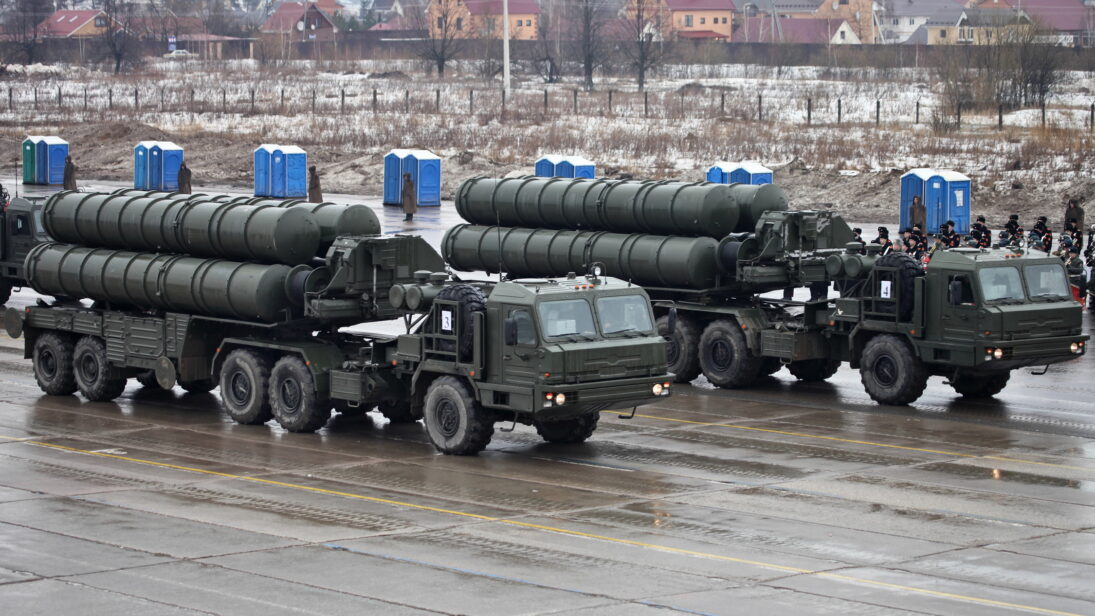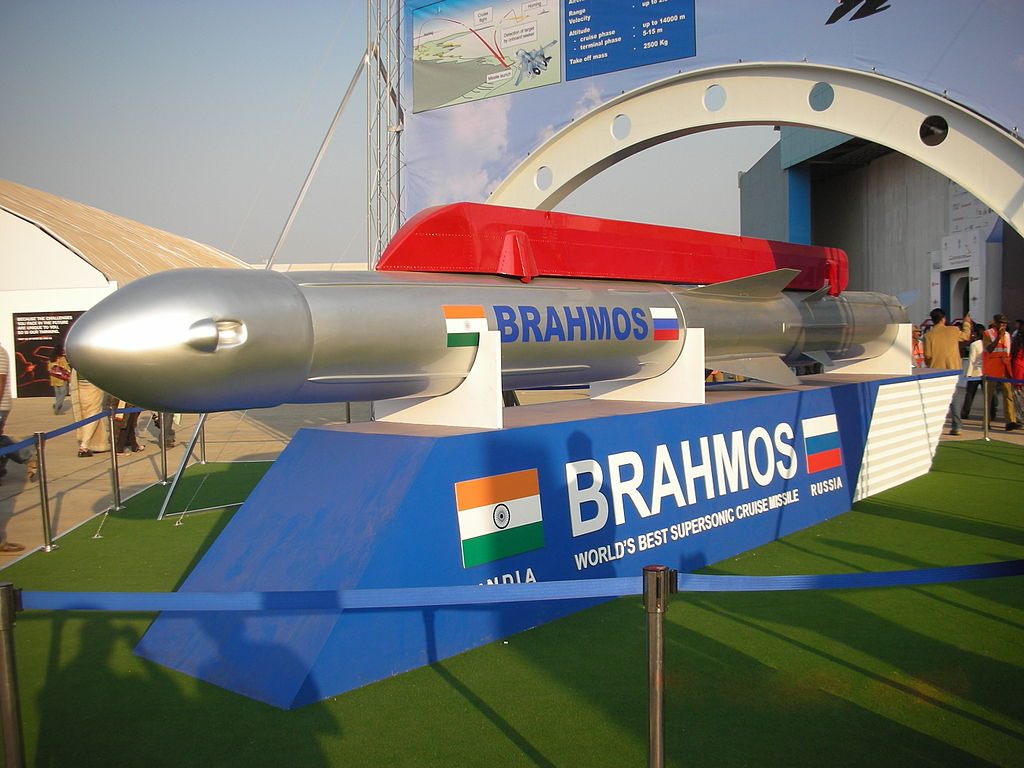
It has been over two months since the Russia-Ukraine War began, and the conflict shows little signs of slowing. Beyond the immediate devastation of the war, the fighting in Europe has once again highlighted the strategic dilemma of foreign dependence for military preparedness. The ongoing strategic and diplomatic conundrum faced by Indian decision-makers perhaps best illustrates this case. This also in part explains the Indian government’s relatively muted criticism of Russian actions and India’s abstention from all United Nations votes condemning Moscow.
For Indian military modernization, the ongoing crisis has short- and long-term implications. Immediately pivoting away from Russia will considerably impact India’s near-term military preparedness vis-à-vis Pakistan and China, especially as the ongoing border standoff with China continues. Despite the necessity of Russian military equipment in the near-term, the war is also likely to add further incentives for a gradual shift away from Russia, focus on indigenization, and increasing military cooperation with the West.
Dependence on Russia
India’s strategic relationship with Russia and defense ties date back to the Cold War era. India’s partnership with the Soviet Union deepened, especially after the Sino-Soviet split and resulted in robust security cooperation that acted as a counter to Pakistan’s ties with both the United States and China in the 1970s. The benefits of affordable pricing, supply of advanced technological systems, requisite training, opportunities for co-production and technology transfers made the Soviet Union—and later Russia—an ideal defense partner. It may also be recalled that save a brief period in the immediate aftermath of the 1962 India-China War, American technology and defense equipment were long denied to India, as it was not a member of any American-led alliance. This further pushed India into the Soviet fold. This perpetuating dependency on Russia led to nearly 70 percent of Indian defense equipment today being Soviet origin.
Despite the necessity of Russian military equipment in the near-term, the war is also likely to add further incentives for a gradual shift away from Russia, focus on indigenization, and increasing military cooperation with the West.
India sought to diversify its defense procurement only at the turn of the century. Despite inching closer towards the West and its allies (the United States, France, Italy, and Israel), New Delhi remains dependent on Russia for arms and advanced weapon systems as well as for spares and upgrades. Between 2017 and 2021, India considerably lowered its dependence on Moscow (by almost 23 percent) and focused on domestically produced arms. Yet, Russia enjoyed a share of over 46 percent of India’s arms imports and was India’s largest supplier of a variety of weapons during the past five years. There is cognizance in New Delhi that although the quality of Russian imports pales in comparison to western systems, the West is unlikely to provide India with the advanced defense technologies that Russia readily offers.
Military Preparedness in the Near-Term
India’s core security priorities are focused on its land-border disputes with China and Pakistan and maritime competition with China in the Indo-Pacific—the war in Ukraine stands to impact both these security priorities in the near- to medium-term (the next five years).
India has been in a border standoff with China along the disputed Line of Actual Control (LAC) since 2020. While the disputed Line of Control with Pakistan remains relatively stable, India-Pakistan bilateral ties remain precarious amid a political crisis in Pakistan and downgraded diplomatic relations and suspended trade ties. Apart from the land border disputes, the attention of Indian military planners is consumed by Chinese activities in Indian Ocean Region, where India positions itself as a dominant maritime actor. These security priorities will continue to dictate the trajectory of Indian defense capabilities and preparedness.
In the near term, the most salient Russian weapons deals include the S-400 missile system, Talwar class frigates (Project 1135.6), Akula class nuclear submarines, T-90 main battle tanks (which involves technology transfer), the jointly manufactured BrahMos missile system and AK-203 Rifles (which includes a contract to manufacture most weapons in India). While these deals are already underway and unlikely to be cancelled, the new developments will make the processes complex, time-consuming, and complicated. India has several essential defense imports from Ukraine, including upgrades for the AN-32, R-27 air-to-air-missiles, and propulsion systems for frigates, which will also face disruption.
A separate area of concern is the transfer of the four remaining units of the S-400—an advanced surface-to-air defense system that is seen as a reliable shield for India from varied types of aerial attacks from China or Pakistan. The Indian Air Force has already deployed the first squadron of the S-400 system after receiving the first batch in December 2021. Although Moscow has continued to supply the simulators and training equipment amid the war, there are concerns over the timely transfer of the remaining units. The war may also impact Washington’s willingness to issue a waiver for India to avoid sanctions under the Countering America’s Adversaries Through Sanctions Act (CAATSA). Given the banking restrictions, even if India is exempted, it will need to find an alternative payment method such as a rupee-ruble deal. Such a mechanism will complicate matters when deciding the rate of interest against the volatile ruble or dealing with the trade deficit and balancing finances, given that India imports more from Russia than it exports. It is also likely to spark tension with the United States. The delay in deploying and operationalizing the S-400 squadrons weakens India’s air defense capabilities, particularly against China, which has already deployed the same system along the LAC.

The supply of Talwar-class (Project 1135.6) frigates is likely to be impacted as a Ukrainian firm, Zorya–Mashproekt, manufactures the gas turbine engines for the Russia-built ship. The Indian Navy procured the frigates to bolster its capability in the air, surface, and sub-surface naval warfare, and any considerable delays may impact its maritime potential in the Indo-Pacific region. After the 2014 Crimea conflict, New Delhi had to convince Kyiv to provide the propulsion system for the construction of two frigates. With Russian strikes on defense industry sites in Ukraine, the war is expected to severely hamper Ukraine’s export capacity in the near term. In the medium-term, India’s “neutral” stance may hinder India-Ukraine ties leading Kyiv to potentially deny India the engines for the remaining frigates, thereby impacting the supplies of the Indian Navy or relevant spares. Even the Indian Army is likely to get affected by the ongoing crisis. The Future Infantry Soldier as a System (F-INSAS) project has shown limited progress in equipping the soldiers with modern weaponry, including assault rifles, which remains a pressing need. Any significant delay in the production of the planned 6,71,000 AK-203 rifles, set to replace the indigenously developed INSAS rifles, will infect its infantry modernization program.
The war may also impact India’s credibility as an arms supplier. In early 2022, India finalized an agreement with the Philippines to sell three batteries of BrahMos cruise missiles. This deal aligns with New Delhi’s Act East policy and its aim to position itself as an arms exporter. India hopes to boost arms exports, which will provide revenue to strengthen its defense manufacturing and increase domestic production. The weapon is also of interest to countries, including Vietnam and Indonesia, but Russia’s degraded ability to supply critical parts may hinder future exports.
Long Term Implications
In the long-term—between five to ten years—the Ukraine-Russian war is likely to be unfavorable for India-Russia defense ties. First, Russia’s primary priority would be to replenish its losses, which is expected to take years. Second, regardless of the outcome of the war, Russia will be worse off as an arms exporter. Its ability to provide a constant supply of critical defense equipment, spares or meaningful support in joint production will be impacted by sanctions, banking restrictions and a ban on semiconductors, which are likely to remain in place for some time to come. This will make it increasingly difficult for New Delhi to sustain a fruitful long-term association with Russia for arms purchases. Third, the quality of Russia’s defense equipment has been questioned, given their dismal performance and heavy losses incurred in Ukraine. Russian equipment has not witnessed this scale of kinetic operations in some time and reports of the decimation of many Russian T-90 main battle tanks with MANPADs, and the downing of Su-30 fighter aircraft, which are a part of the Indian military, have raised concerns in New Delhi. The subpar performance of Russian systems will be a factor of consideration in future acquisition plans.
The Way Ahead
The developments from the Russia-Ukraine front may serve as a wake-up call for Indian defense planners and political leadership. Several structural, procedural, and material bottlenecks arising from the Russia-Ukraine conflict will make defense procurement from Russia and Ukraine prohibitive or even impossible in the coming years. The strengthening geopolitical alignment between China and Russia may further limit India’s ability to effectively practice a multi-alignment foreign policy. Given the support Beijing has provided Moscow in the conflict—which pales in comparison to New Delhi’s position—India may be faced with a Russia that is far more beholden to China and less likely to support India on issues of strategic importance like the LAC.
Regardless of the outcome of the war, Russia will be worse off as an arms exporter.
Under the backdrop of growing unpredictability in the global order and Prime Minister Modi’s persistent push for self-reliance (Atmanirbhar Bharat), a greater thrust on indigenization seems to be the way ahead. India would look at co-production and technology transfers while selling itself as a global destination for third-country exports by projecting cheap labor and infrastructure costs. Despite divergent positions on Ukraine, the West, particularly the United States, is mindful of India’s growing salience in keeping a check on China in the Indo-Pacific. There is an increasing Western understanding of India’s legacy issues and Russian dependency and the need to provide alternatives, including state of the art technology. In the long-term, therefore, an accelerated push on domestic manufacturing coupled with co-production, technology and knowledge transfers from the West may be a blessing in disguise for New Delhi. However, in the short- to medium-term, obsolescence in defense equipment sourced from Soviet Russia will continue to mar India’s defense preparedness.
Editor’s Note: This article is part of two-part series examining the impact of the Russia-Ukraine war on India and Pakistan’s military modernization programs and operational planning. Read part two here.
***
Image 1: Vitaly V. Kuzmin via Wikimedia Commons
Image 2: Anurag via Wikimedia Commons


